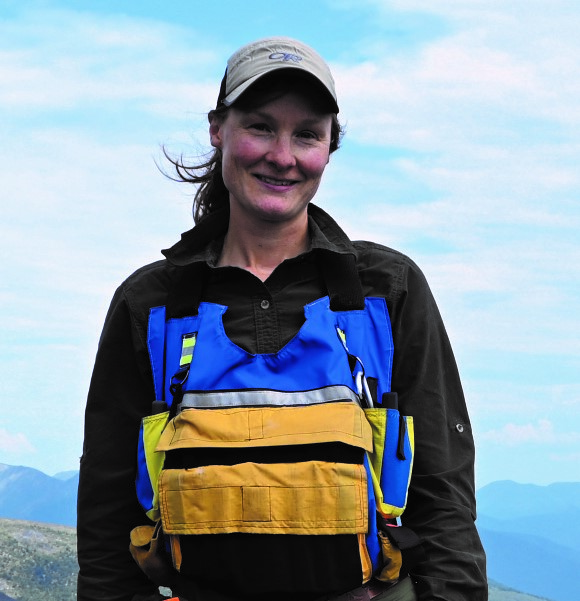Spring 2022
| Speaker: | Diane Skipton, Yukon Geology Survey |
| Title: |
"Investigating the evolution of regional-scale Cretaceous faults in central Yukon: the Dawson, Tombstone and Robert Service thrusts" |
| Date: | March 25, 2022 |
| Time: | 11:45 am |
| Location: | Contact instructor for details. jemezger@alaska.edu |

Abstract:
The NW-SE-trending Selwyn fold-thrust belt in central Yukon formed in response to
Jura-Cretaceous shortening during the Cordilleran orogeny. The Robert Service thrust,
a major thrust in the belt, juxtaposed Neoproterozoic rocks (Hyland Group) over Devonian-Mississippian
strata (Earn and Tsichu groups). The younger Tombstone thrust repeated Devonian-Mississippian
(Earn Group) rocks in central Yukon. Based on previous Ar/Ar dating of muscovite in
the Tombstone high-strain zone, the Tombstone and Robert Service thrusts have been
interpreted as older than ca. 104 Ma. To the northeast, the Dawson fault juxtaposed
Neoproterozoic rocks (Hyland Group) over Paleozoic platformal carbonate rocks (Bouvette
Formation). Movement along the Dawson fault may have begun in the Neoproterozoic,
with reactivation in the Paleozoic and Mesozoic. Recent 1:50,000-scale bedrock mapping
across these three faults in the Nash Creek area of central Yukon has revealed new
insights into their location and structural evolution. Bedding and an early bedding-parallel
fabric were re-oriented by NW-SE-striking folds, which occur from the micro-scale
to map-scale. Fold axes plunge shallowly to moderately towards the NW or SE, and the
folds form several different types, including asymmetric folds that indicate N-NE
vergence. An axial planar foliation is defined by lower-greenschist-facies minerals,
predominantly white mica and chlorite in clastic rocks. In the mapped area, the shallow-dipping
Robert Service thrust is clearly identified and has an associated zone of intense
deformation, whereas the Tombstone thrust and its high-strain zone are less well-defined.
The steeply-dipping Dawson thrust zone comprises imbricates of Neoproterozoic to Silurian
strata, as well as Ordovician(?) volcanic rocks that occur above the Paleozoic platformal
rocks in the footwall. Preliminary new in situ Ar/Ar dates of ca. 68 Ma from white mica in phyllite are interpreted to record the
timing of foliation, which may have developed in response to latest (Dawson?) fault
movement. Together, field data and Ar/Ar dates suggest that the deformation footprints
of the Robert Service, Tombstone and Dawson thrusts overlapped in the Nash Creek area
during protracted Cretaceous thrusting.


